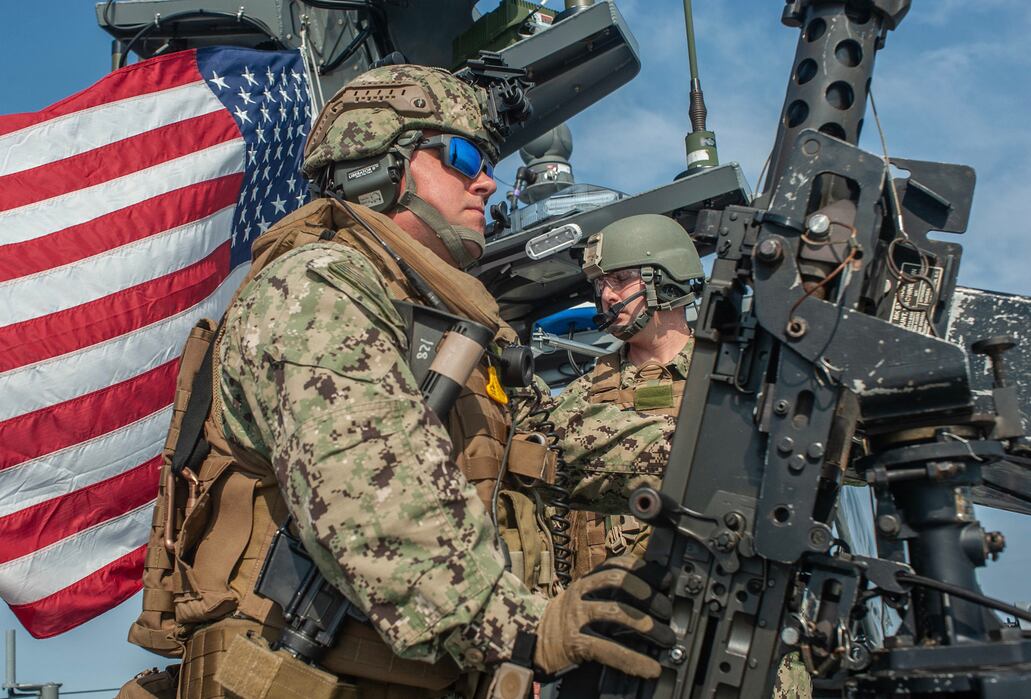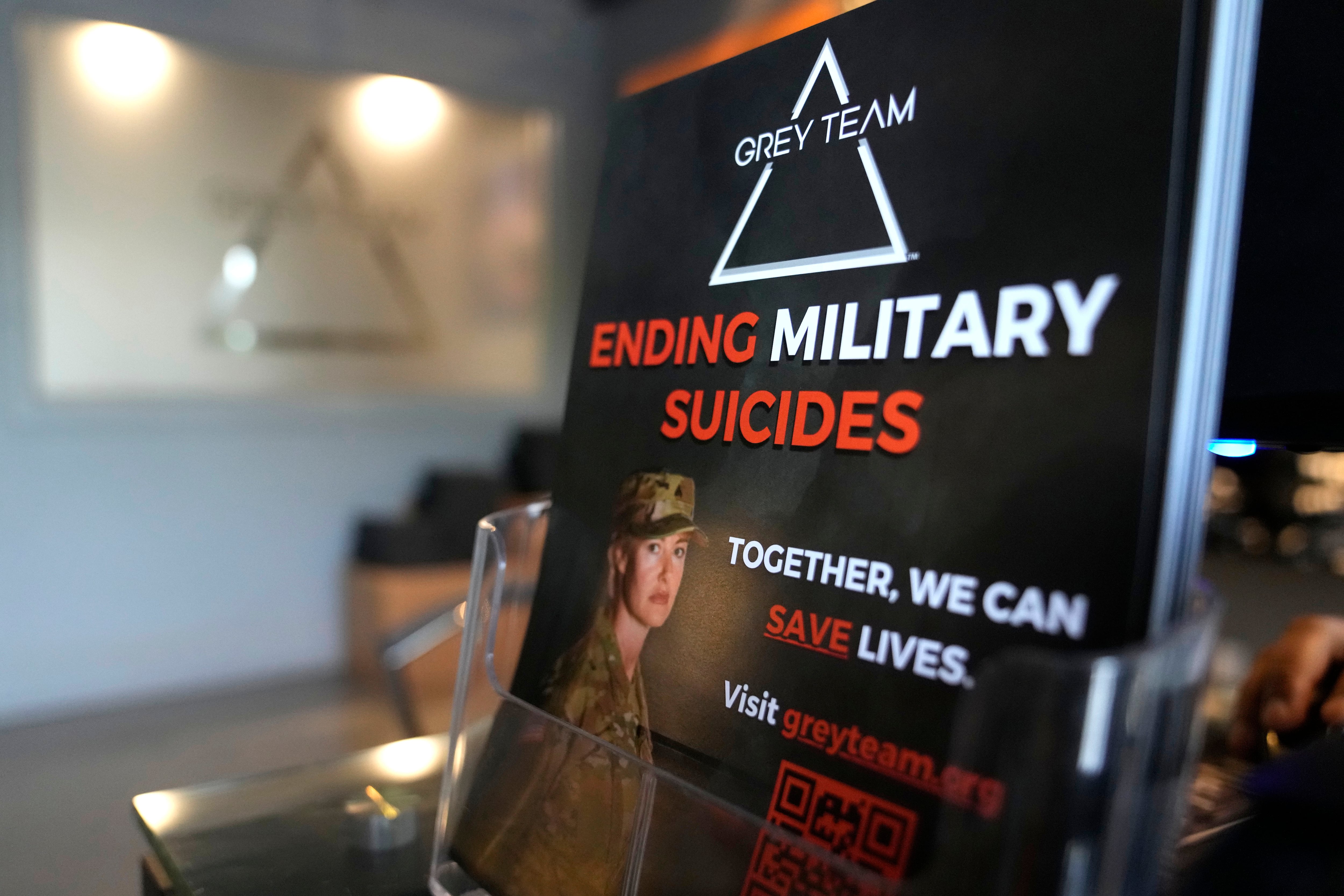You’re finishing up shore duty but you dread going back to gray and underway.
Want a change that won’t hurt your career and might even help it? Think you’re tough enough and can master small arms, crew-served weapons and high-throttle tactics in dangerous waters? Want to quit following and start leading from the front?
Go boats! The Navy’s Coastal Riverine Force is hiring.
“Our forte is the small unit tactics in the maritime environment,” said Capt. Ty Britt, a career Surface Warfare Officer who served aboard the guided-missile cruisers Vella Gulf and Port Royal and commanded the crews of the minesweepers Sentry, Defender and Dextrous.
“You have very junior officers and very junior sailors leading at the point of performance. They’re going to be up close and personal as your main battery are crew-served weapons. So count on a close-in fight," said Britt, who took command of Coastal Riverine Group 2 last year. "We’re looking for sailors hungry to learn and who aren’t afraid to step up regardless of their pay grade because here, if they prove themselves, we let them lead.”
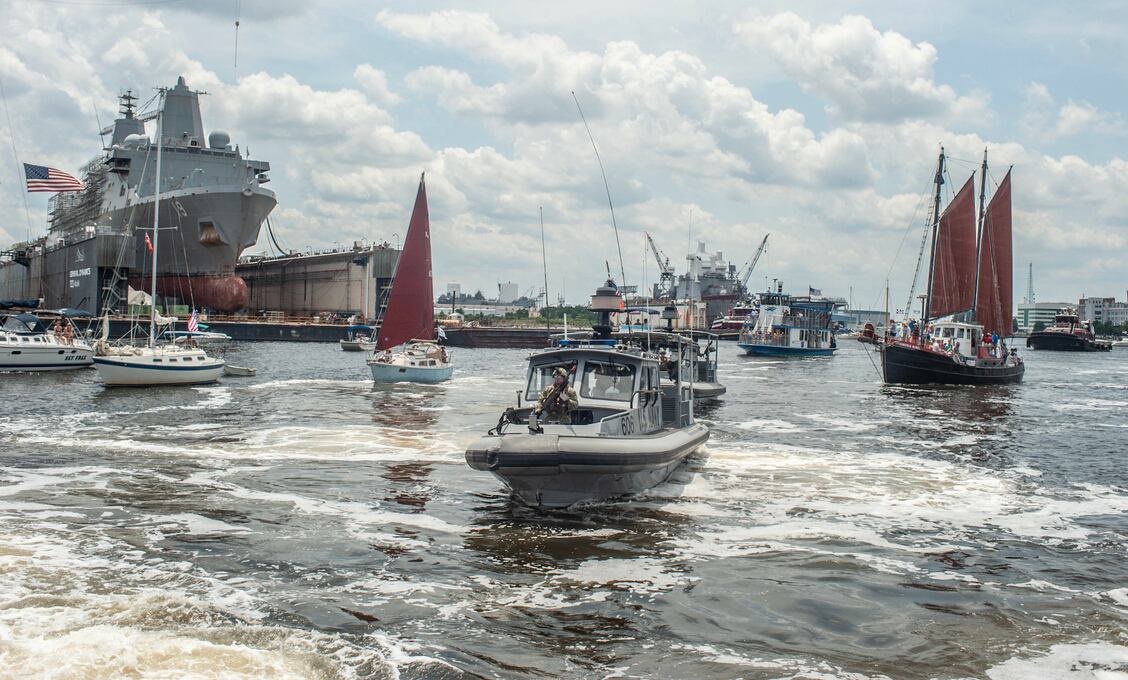
Today’s riverine force is nestled inside Navy Expeditionary Combat Command but it evolved out of the daredevil sailors who served aboard PT boats in World War II and their brown water brothers who fought in Vietnam.
To Britt, the DNA that runs through those crews never changed — grittiness, hard training and a toughness that prepares them for combat at close quarters.
“I was out with a squadron recently where the boat’s coxswain was a second-class electronics technician," said Britt. "Nowhere else in the Navy will an ET2 get the chance to drive a boat like that. And as an E-6 or a chief petty officer, you can qualify and serve as a patrol officer with tactical control over two to four boats.”
Like special operations teams, riverine crews have flattened the rank structure. If sailors “step and show what they can do, if they’re the best and fully qualified, we’ll let them do the position,” Britt said.
“The level of responsibility put on an E-5 like me is unlike anything at larger fleet commands I’ve been in,” said Engineman 2nd Class James Vavala. “When it comes to getting this boat underway, I’m it ... for lighting off the engineering plant and making sure we’re ready to roll.”
RELATED
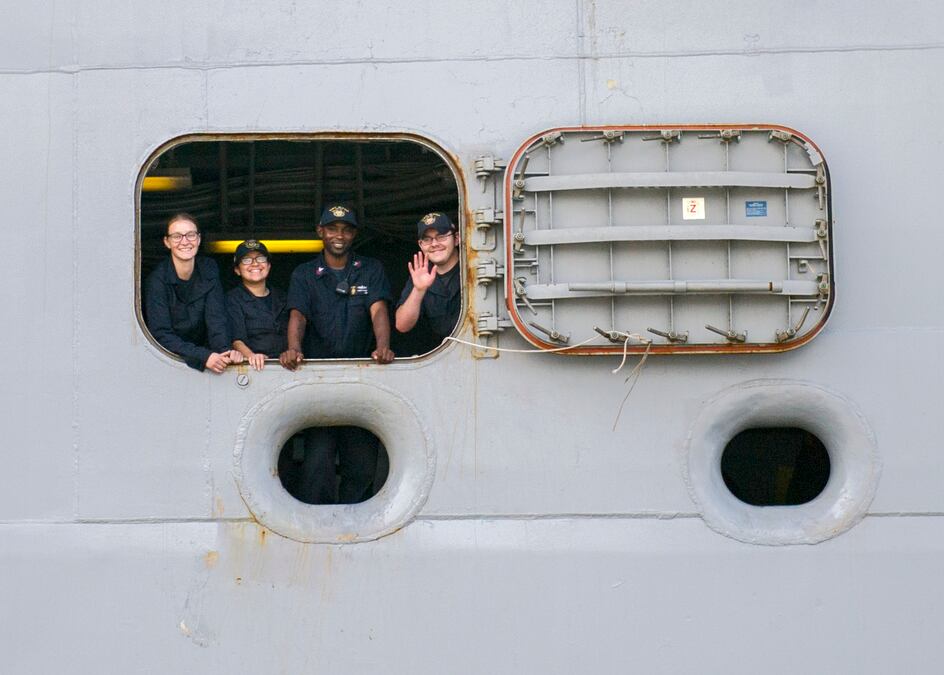
For junior SWOs, that leadership role means taking command of one of the 12 new 84-foot Mark VI patrol boats and the 11 sailors who man it, which can jump start a career primed for much bigger vessels.
“The new MKVI post-division officer command billets afford an officer the opportunity to deploy to many of the areas where our nation needs us,” said Cmdr. Tim LaBenz, the head of the Surface Junior Officer Detailing Branch. "From out waterfront engagements and daily interactions with our constituents we hear the excitement at commanding at such an early stage in one’s career.
“They understand that the small complement of a MKVI platform requires them to be the best, fastest, toughest and smartest on the seas and they want in.”
And if you’re a lieutenant commander who has headed a department, you can screen for command of a Mark VI company, leading three of the boats.
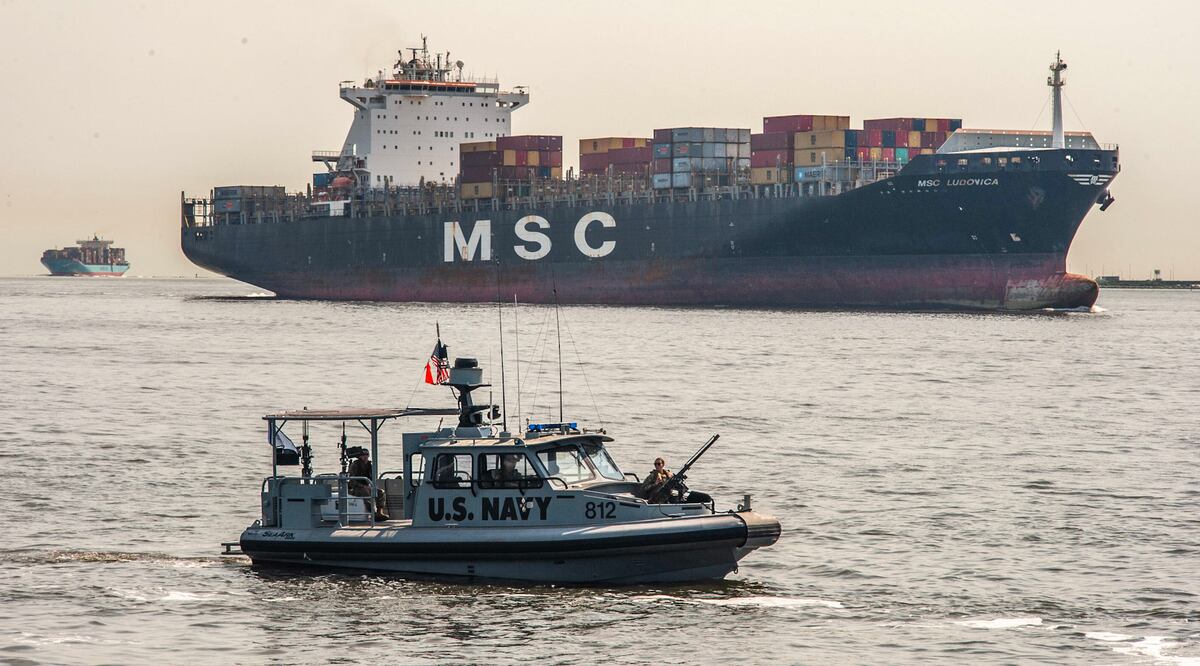
The bulk of these crews serve in squadrons based in Little Creek, Virginia, and Imperial Beach, California, but other detachments dot the globe.
They run missions such as coastal combat and service support but also defend ports and escort high-value assets —including aircraft carriers and Military Sealift vessels — through dangerous choke points like the Strait of Hormuz.
“For the coastal combat and service support, what we’re talking about is the large Mark VI craft as well as our other 34-foot patrol boats,” Capt. Britt said. “These are craft that can push out into open waters.
"We focus mainly on the littorals. MarK VI has longer legs and can go out in blue water and support fleet operations or support offshore operations like providing defense for an oil platform.”
Britt’s three squadrons make routine seven-month rotations overseas.
“The bulk of the squadron would deploy to, say, 6th Fleet and we have Mark VI boats deployed in locations where we support harbor defense and combat support," he said. “But we also deploy to Rota (Spain) and Guam and sometimes we also deploy small elements to 4th Fleet.
"If you do the math, 12 months back home to retrain and recertify — that’s a little tight turning circle, but we rely on our command training teams with the help of recent deployers to lead this training.”
And if you can’t hack hard toil in choppy seas, Britt doesn’t want you.
“You got to be physically fit” he said. “It’s very demanding on these small craft. They move a lot. You’re wearing body armor much of the time, so that’s adding 30 to 40 pounds to you on a moving deck and it is very physically demanding."
And the climes and places Britt’s boats go don’t make it any easier on the crews. He points to the 5th Fleet’s area of operations.
“You are operating on a small aluminum craft in the Arabian Gulf in August,” Britt said. “It tends to be a little hot and humid. You have to be able to wear your body armor and sustain those operations and that requires stamina and fitness.”
Before you can even try out for Britt’s team you must pass three consecutive fitness tests. And it just gets harder mentally and physically after that.
“You have to be hungry to learn everything — small arms, crew served weapons or (communications) systems and also understand small unit tactics. And above all you must be a team player,” Britt said. “It’s taking a blue water fleet sailor and changing them into a green expeditionary sailor at a fundamental level and the learning is constant through your whole turn."
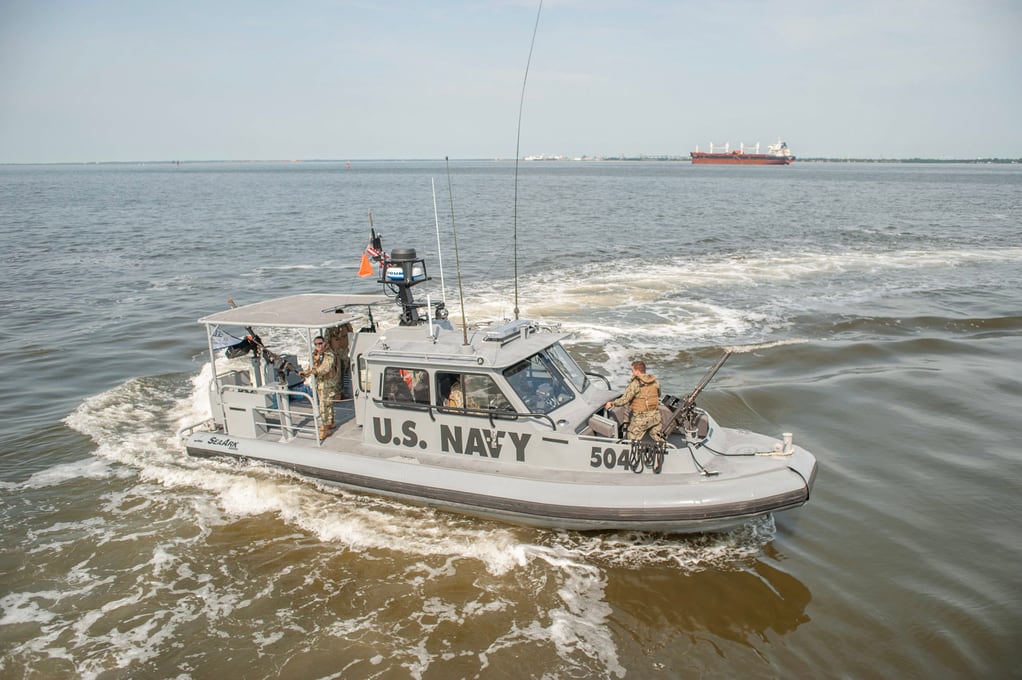
The riverine squadrons offer billets for sailors in 17 different ratings but the core skill sets are found with boatswain’s mates, enginemen, quartermasters and gunner’s mates, according to Britt.
The rest of the ratings round out the fighting force but everyone has the opportunity to join a boat crew if they work hard at it, he said.
“These are complex craft and we have a lot of high tech ratings such as electronics technicians and information systems technicians providing support as well both on the craft and at the squadron level,” Britt said. “And many of these sailors also qualify for positions in boat crews like the ET I talked about earlier. It’s what you can do that we value here.”
Most of their formal training occurs at a four-week course taught in Gulfport, Mississippi. That’s where they start to transform from shipboard sailors into expeditionary crews that can handle weapons and small unit tactics.
Some crew members also get sent to learn specialty skills, such as enginemen who study at a diesel propulsion course, but most of the team will learn on the job, training the way they’ll fight in a war.
“When we’re out operating on a boat, it’s as operational as you get,” said Chief Boatswain’s Mate (SW/AW) Gabriel Oswald. “It’s a small crew and we all get very tight, like a family. And those kinds of dynamics sure make deployments better and you sure don’t get that on an aircraft carrier.”
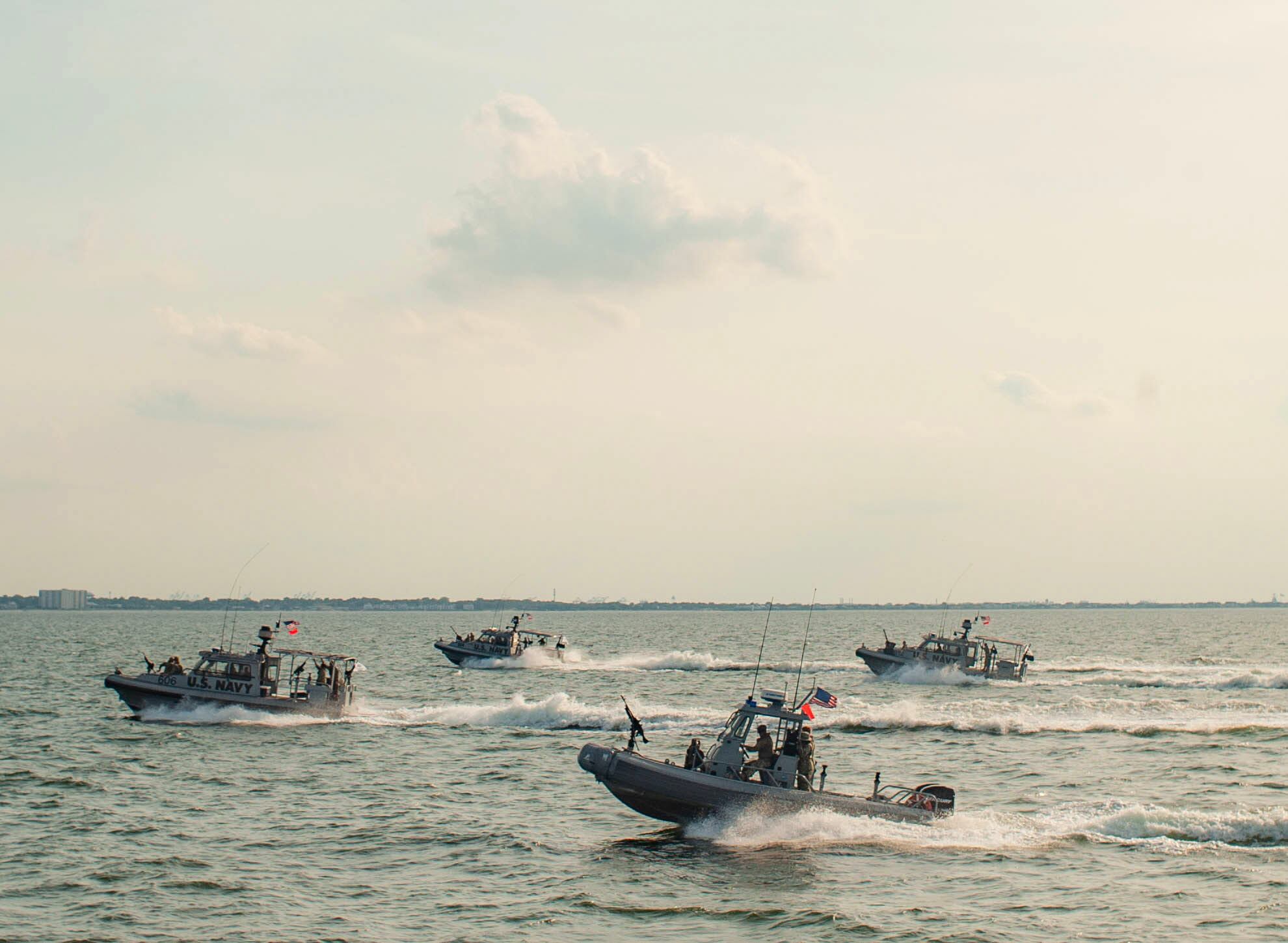
Want to go riverine?
Location: Active duty Coastal Riverine Squadrons are homeported in Virginia Beach, Virginia, and Imperial Beach, California. They deploy regularly to the 5th, 6th and 7th Fleets.
Eligible enlisted: BM, CM EM, EN, EO, ET, GM, HM, IS, IT, LS, MA, MM, OS, PS, QM, YN
Eligible officers: Designators include SWO, Supply, Aviation, Intelligence, and Information Professionals. Junior SWOs can compete to become Mark VI patrol boat commanders but they must be on track to successfully complete their second division officer tour. Department heads can request to screen to become Mark VI company commanders.
Fitness Requirements: Candidates must pass three consecutive physical fitness assessments and the “Class Two Swimmer” test. This physically arduous combat duty requires sailors to operate in austere environments, with personnel wearing heavy body armor and carrying weapons. Those with physical conditions such as chronic back, shoulder or knee problems will not be considered.
Training: Personnel attend the four-week Expeditionary Combat Skills Course in Gulfport, Mississippi. Boat qualifications and advanced skills are honed during unit training and special schools.
Source: Navy Expeditionary Combat Command
Mark D. Faram is a former reporter for Navy Times. He was a senior writer covering personnel, cultural and historical issues. A nine-year active duty Navy veteran, Faram served from 1978 to 1987 as a Navy Diver and photographer.
